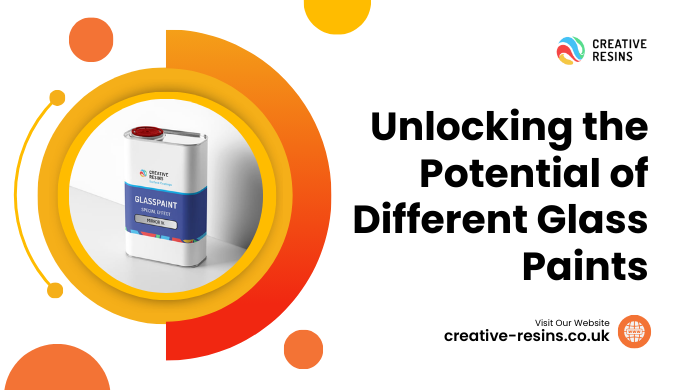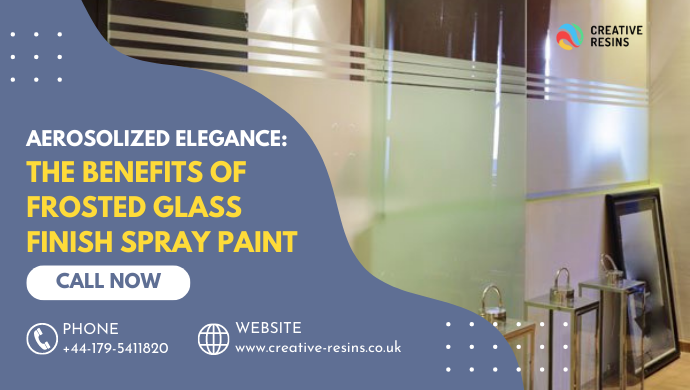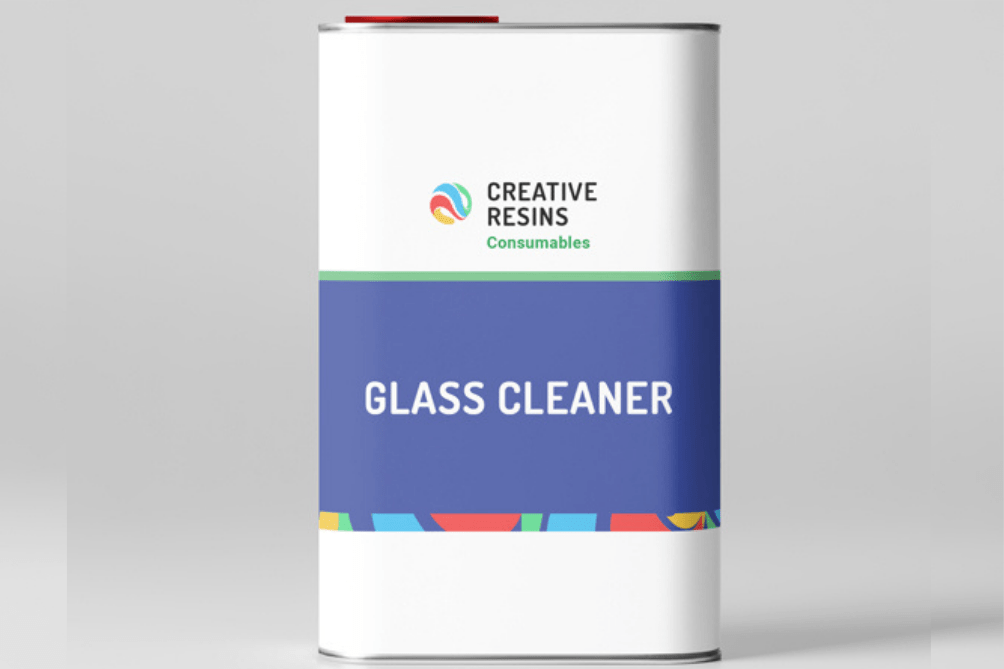Category: Glass Paint
From Stained Glass to Mirror Effects: Unlocking the Potential of Different Glass Paints
Using glass paint, you can unleash your creativity and transform ordinary glass into extraordinary art. Let us take you on a journey from the mesmerizing beauty of stained glass paints to the captivating allure of mirror-effect glass paints. Discover the vast potential of different glass paints and learn how to combine them for stunning results. With our expert tips, you can achieve professional-looking glass paint applications that will leave you in awe.
Introduction
Different glass paints’ fascinating possibilities range from creating vibrant stained glass designs to achieving stunning mirror effects. Understanding techniques is vital to unlocking the full potential of glass paints. You can create unique and captivating artwork by exploring effects such as transparency, opacity, and texture. Glass paints can be used in various creative applications, including windows, glassware, and jewelry. However, there are essential considerations to remember when working with glass paints, such as the compatibility of paints with different types of glass and the need for proper ventilation during the painting process. Additionally, combining different types and colours of glass paints can produce even more dynamic and visually striking effects.
Understanding Stained glass paints
To understand stained glass paints, it’s essential first to define their characteristics. Stained glass paints are specially formulated to create vibrant and translucent colours on glass surfaces. They’re typically water-based and contain pigments compatible with glass, allowing for easy application and adhesion. Techniques for using stained glass paints include brush painting, airbrushing, and sponging, each offering different effects and textures. Projects using stained glass paints range from traditional stained glass windows to decorative items like vases and lampshades. It’s crucial to consider factors such as opacity, drying time, and layering techniques to achieve desired effects.
Definition and characteristics of stained glass paints
Stained glass paints are specially formulated paints designed to be applied on glass surfaces. Their unique properties allow them to adhere to glass and create vibrant and translucent colours. Here are three critical characteristics of stained glass paints:
1. Transparency: Stained glass paints are known for their transparency, which allows light to pass through the painted glass, creating a beautiful effect. This characteristic is crucial for achieving the signature stained glass look in projects.
2. Versatility: Stained glass paints can be used on various glass surfaces, including windows, vases, and lampshades. They can also be applied using brushwork, spraying, or airbrushing techniques, allowing for various creative possibilities.
3. Durability: Stained glass paints are designed to withstand the test of time. Once properly cured, they become permanent and resistant to fading, peeling, and cracking. It makes them ideal for long-lasting projects and ensures the colours remain vibrant and intact for years.
Techniques for using stained glass paints
Using various techniques, you can unlock the full potential of stained glass paints and create stunning effects on glass surfaces. Stained glass techniques offer many possibilities for achieving desired effects and adding depth to your artwork. One popular method is the mirror effect, where you apply metallic paint to the backside of the glass, creating a reflective surface. This technique is commonly used for creating decorative mirrors or adding a touch of elegance to your stained glass pieces. Another creative application is layering and blending techniques, where you apply multiple paint layers to create dimension and texture. It allows you to play with different colours and create unique effects. Experimenting with these techniques will help you unleash your creativity and elevate your stained glass artwork to new heights.
Examples of projects using stained glass paints
You can create various stunning projects using stained glass paints. Here are three project ideas that showcase the versatility of stained glass paints:
1. Faux Stained Glass Window: Transform an ordinary window into a work of art by painting a faux stained glass design. Outlining, shading, and blending techniques create intricate patterns and vibrant colours. Experiment with different colour combinations to achieve the desired effect.
2. Glass Vases: Give plain glass vases a unique and colourful makeover using stained glass paints. Apply the paints in layers, allowing each layer to dry before adding the next. Create a marbled effect by combining different colours or use a stencil to paint intricate designs. The translucent nature of stained-glass paints will give your vases a beautiful stained-glass appearance.
3. Glass Jewelry: Create stunning jewelry by painting on glass pendants or beads. Experiment with different surface options, such as clear or frosted glass, to achieve different effects. Use techniques like dotting, sponging, or brush strokes to create exciting patterns and textures. Combine different colours to create eye-catching designs.
These project ideas are just the beginning. Let your creativity run wild and find inspiration in the endless possibilities of stained glass paints.
Tips and tricks for achieving desired effects with stained glass paints
Achieve your desired effects with stained glass paints by experimenting with different techniques and colour combinations. When working with stained glass paints, several tips and tricks can help you unlock the full potential of these paints.
- Understanding the properties of the paint is crucial. Different paints have different consistencies and drying times, so read the instructions carefully.
- Practice different brush strokes and techniques to create various effects, such as shading, blending, and texture.
- Mixing different colours can create unique shades and tones, allowing you to achieve the desired look.
- Don’t be afraid to experiment and think outside the box. Stained glass paints offer endless possibilities for creativity, so let your imagination run wild.
Exploring Mirror Effect Glass Paint
Mirror effect glass paint is a particular type that creates a reflective surface on glass, giving it the appearance of a mirror. Different methods exist for creating mirror effects on glass, including spray-on coatings and adhesive-backed films. The creative applications of mirror effects on glass are vast, ranging from decorative accents in homes and businesses to artistic installations. When using mirror-effect glass paints, it’s essential to consider factors such as surface preparation, drying time, and proper ventilation to achieve optimal results.
Definition and characteristics of Mirror effect glass paint
Unlock the mesmerizing allure of mirror-effect glass paint by understanding its defining features and unique properties. Here are three critical characteristics of mirror-effect glass paint:
1. Reflective Surface: Mirror effect glass paint creates a highly reflective surface that mimics the appearance of a traditional mirror. When applied correctly, it gives glass surfaces a sleek and glossy finish, adding depth and sophistication to any space.
2. Versatile Application: Mirror effect glass paint can be applied to various glass surfaces, including windows, mirrors, and furniture. Its versatility allows for creative expression in contemporary art and interior design, making it popular among artists and designers.
3. Achieving Subtle Effects: While mirror effect glass paint can create a bold and striking mirror-like finish, it can also achieve a more subtle effect. Adjusting the application technique makes creating a softer and more delicate reflective surface possible, adding a touch of elegance to any glass object or space.
Different methods for creating mirror effects on glass
You can experiment with various techniques using mirror-effect glass paint to explore the different methods for creating mirror effects on glass. Mirror effect glass paint is specially formulated to give a reflective finish, similar to a traditional mirror. You can try several mirror effect techniques to achieve the desired effects on your glass surfaces.
One method is the spray technique, where you can use a spray gun or aerosol to apply the mirror effect paint onto the glass evenly. This technique allows for a smooth and seamless finish, giving your glass a stunning mirrored appearance.
Another method is the brush technique, where you can use a brush to apply the mirror effect paint onto the glass. This technique gives you more control over the application process, allowing you to create unique patterns and designs on your glass surfaces.
When using mirror-effect glass paint, there are some important considerations to remember.
- Properly clean and prepare the glass surface before applying the paint. It will ensure better adhesion and longevity of the mirror effect.
- Applying multiple thin coats of paint rather than one thick coat is recommended to achieve a more realistic mirror finish.
Mirror effect glass paint can be used for various creative applications, such as creating decorative mirrors, glassware, or artwork. With the proper technique and attention to detail, you can achieve stunning results that will enhance the beauty of your glass surfaces.
Creative applications of mirror effects on glass
Once you have mastered the techniques for creating mirror effects on glass using mirror-effect glass paint, there are countless creative applications that you can explore. Here are three innovative mirror effect techniques that can be used for your glass projects:
1. Layering: You can achieve a layered effect by applying multiple coats of mirror-effect glass paint. Experiment with different colours and opacity levels to create stunning visual effects.
2. Texturing: Use unconventional materials like sponges or stencils to create textured patterns on your glass surface. When combined with mirror-effect glass paint, these textures can create beautiful, shimmering patterns that catch the light in interesting ways.
3. Mixed Media: Combine mirror effect glass paint with other materials, such as beads, sequins, or metallic accents, to create experimental mirror effect projects. These unconventional mirror effect applications can add a touch of glamour and uniqueness to your glass artwork.
You can achieve stunning and unconventional results by exploring these creative options and pushing the boundaries of traditional mirror effect techniques.
Important considerations when using mirror-effect glass paints
Selecting high-quality paints is crucial to achieving mirror effects. Brands such as Creative Resins offer excellent options. Before starting your project, prepare the glass surface by cleaning it thoroughly and ensuring it’s free from any oils or residues. Apply the mirror effect paint evenly using a soft brush or sponge, following the manufacturer’s instructions for drying and curing times. Common challenges with mirror-effect glass paints include streaking and uneven coverage. To troubleshoot these issues, use lighter brush strokes and apply multiple thin layers rather than one thick coat. Experiment with different techniques to create unique mirror effects, such as dabbing or swirling the paint. Remember to practice on a small test piece before attempting larger projects to refine your technique and ensure desired results.
Other Types of Glass Paints
Now, let’s explore other types of glass paints that offer unique features and uses. One such type is metal paint, which adds a metallic sheen to glass surfaces and is often used for creating a sleek and modern look. Another type is chrome paint, which provides a reflective, mirror-like finish and is ideal for achieving a futuristic aesthetic. These different types of glass paints open up a world of possibilities for various projects, from creating statement pieces to adding a touch of elegance to home decor.
Introduction to other types of glass paints (e.g., metal paint, chrome paint)
You can explore the exciting possibilities of metal paint and chrome paint. Here are three ways these paints can enhance your artwork:
1. Metal Paint Applications: Metal paint, made with metallic pigments, can create a stunning metallic finish on glass. Its reflective surface adds depth and texture to your design, making it perfect for creating intricate patterns or adding a touch of luxury to your artwork.
2. Unique Properties of Metal Paint: Metal paint offers excellent adhesion and durability, ensuring your artwork lasts for years. It’s also resistant to fading, making it ideal for outdoor projects. Additionally, metal paint can be combined with other glass paints to achieve various colours and effects.
3. Techniques for Using Chrome Paint: Chrome paint creates a mirror-like finish on glass, giving your artwork a sleek and modern look. To achieve the desired effects, apply thin layers of chrome paint using a soft brush or sponge. Experiment with brush strokes and methods like dry brushing or stippling to create exciting textures and patterns.
Unique features and uses of each type of glass paint
Each type of glass paint offers distinctive qualities, making it ideal for various applications. Metal paint, for example, contains metallic pigments that create a shimmering effect on glass surfaces, adding a touch of elegance to your designs. Chrome paint, on the other hand, provides a mirror-like finish, perfect for creating reflective surfaces.
Examples of projects using different types of glass paints
Continuing the exploration of different types of glass paints and their unique features and uses, let’s now dive into some inspiring examples of projects that showcase the creative potential of these paints.
1. Glass paint techniques for creating textured effects:
Imagine a beautifully textured stained glass window, achieved by layering different shades of glass paints and using techniques like sponging, stippling, or dragging. The result is a stunning interplay of colours and textures that add beauty to any glass surface.
2. Using glass paints to enhance home decor:
Transform ordinary glass vases, candle holders, or picture frames into unique art pieces by simply applying glass paints. Whether you opt for a vibrant design or a delicate and ethereal motif, glass paints can instantly improve the appearance of your home decor.
3. Glass painting ideas for personalized gifts:
Show your loved ones how much you care by creating personalized gifts using glass paints. Paint a monogram or a meaningful quote on a glass plate or a set of wine glasses for an exceptional and thoughtful present.
Incorporating glass paints in various creative endeavors, such as jewelry making or mixed media artwork, opens up a world of possibilities for unique and visually captivating designs. Whether you’re a seasoned artist or a beginner, experimenting with different types of glass paints can bring your artistic visions to life.
Combining Glass Paints for Stunning Results
Combining different types of glass paints can offer several advantages when achieving stunning results in glass painting. By layering and blending different paints, you can create unique and dynamic effects that add depth and dimension to your artwork. Techniques such as using transparent paints over opaque ones or mixing different colours can produce beautiful and unexpected results. Proper application techniques, curing, and sealing different glass paints can result in a more durable and long-lasting finish.
Techniques for layering and blending glass paints
By incorporating various techniques for layering and blending glass paints, you can achieve stunning results that enhance your artwork. Layering techniques involve applying multiple coats of paint in different colours. It can be done by starting with a base layer and then gradually adding layers of lighter or darker shades. Blending techniques, on the other hand, involve mixing different colours to create new shades and gradients. It can be achieved using a palette knife or a brush to blend the colours while wet. From subtle transitions to bold contrasts, you can create various effects by layering and blending glass paints. This technique also allows for colour mixing and achieving texture, adding complexity and visual interest to your artwork. By mastering these techniques, you can unlock the full potential of glass paints and create genuinely breathtaking pieces.
Inspirational examples of mixed media glass painting projects
Here are three examples that showcase the creativity and versatility of mixed media techniques in glass painting:
1. Creative fusion:
Imagine a glass panel adorned with a combination of transparent glass paints and metallic paints. The luminous transparency and the reflective shimmer create a captivating visual effect.
2. Artistic combinations:
Picture a stained glass window featuring a harmonious blend of traditional stained glass paints and modern acrylic paints. This unique combination allows for a broader range of colour possibilities and intricate detailing, resulting in a captivating masterpiece that seamlessly merges the old and the new.
3. Experimental approaches:
Visualize a glass vase embellished with textured glass paints and resin. This experimental technique combines the textured paint’s tactile qualities with the resin’s glossy finish, creating a captivating tactile and visual experience.
These examples demonstrate the unconventional possibilities and limitless potential that arise when different glass paints are combined in mixed-media glass painting projects.
Tips for Proper Glass Paint Application
- To ensure proper glass paint application, thoroughly clean and prepare the surface. Utilize a lint-free cloth and a glass cleaner to remove any dirt, dust, or oils that may interfere with the paint adhesion.
- Choose the right brushes and tools, such as fine-tip brushes for intricate details and foam brushes for larger areas.
- When applying the glass paint, use even, smooth strokes and avoid overworking the paint to prevent streaks or clumps.
Preparing the glass surface for painting
To ensure proper glass paint application, thoroughly clean the glass surface. It removes any dirt, grease, or residue affecting the paint’s adhesion. Use a gentle cleaning method, such as a mild detergent and warm water or a glass-specific cleaner. Avoid abrasive cleaners or tools that can scratch the glass. After cleaning, prime the glass surface to enhance paint adhesion. Apply a thin layer of glass primer using a foam brush or a soft cloth. Permit the primer to dry completely before proceeding with the painting process. Consider surface treatment techniques to improve paint adhesion and longevity. One standard method is to sand the glass surface with fine-grit sandpaper lightly. It creates a slightly rough texture that helps the paint adhere better. Alternatively, you can use a glass etching cream to create a frosted or textured surface, providing a better grip for the paint.
Choosing the right brushes and tools
Choosing the right brushes is crucial for achieving the desired effects on glass. Synthetic brushes with soft bristles are ideal for glass painting, providing smooth and even coverage. Avoid using natural bristle brushes as they leave visible brush marks on the glass. Different tools can also be used to enhance your glass painting techniques. Consider using a liner brush or a fine-tipped paint pen for intricate details. Sponges or foam brushes can be used for creating textured effects or for blending colours. Exploring different options and experimenting with various brushes and tools is vital to finding what works best for your specific glass painting project.
Proper techniques for applying glass paints
Once you have chosen the right brushes and tools, you must learn the proper techniques for applying glass paints to achieve stunning results. Here are three tips and tricks for successful glass paint application:
1. Prep the surface:
Before applying glass paints, ensure the surface is clean and free from dust or oils. Use a mild detergent and water to clean the glass, and then wipe it dry with a lint-free cloth. It will ensure better adhesion and prevent any unwanted streaks or smudges.
2. Use thin, even coats:
Apply the glass paint in thin layers using a brush or sponge. Start from one edge and work across the surface, ensuring even coverage. Do not apply too much paint simultaneously, leading to drips or pooling. Multiple thin coats will allow you to achieve the desired effects more effectively.
3. Allow proper drying time:
After applying each coat of paint, allow it to dry completely before adding another layer. Follow the manufacturer’s instructions for drying times, as they may vary depending on the type of glass paint used. Rushing the drying process can result in uneven finishes or smudging.
Curing and sealing glass paint for long-lasting results
Curing techniques are crucial in preserving glass paint and achieving durable and long-lasting finishes. One popular method is heat curing, which involves placing the painted glass in a kiln or oven at a specific temperature and time. This process helps the paint bond securely to the glass surface, enhancing its durability and resistance to fading or peeling. Another curing technique is air drying, where the painted glass is left to dry naturally. While this method is less time-consuming, it may not provide the same level of durability as heat curing. After curing, sealing the glass paint is essential to protect it from external elements, such as moisture and UV rays. Various sealing methods can be used, including applying a clear coat or a sealant specifically designed for glass paints. These sealants create a protective barrier that enhances the longevity of the painted glass and prevents colour fading or damage. When selecting a sealing method, consider factors such as the type of glass paint used, the desired level of glossiness, and the environmental conditions to which the painted glass will be exposed. By following proper curing techniques and sealing methods, you can ensure that your glass paint retains its vibrant colours and remains intact for years.
Final thoughts on the versatility and beauty of glass painting
After exploring the endless possibilities of color blending, texture experimentation, layering techniques, gradient creation, and different finishes, it becomes clear that glass painting offers a versatile and beautiful medium for artistic expression. The versatility of glass painting allows for creative applications in various contexts, such as home decor, fine art, and even commercial displays. The beauty of glass painting lies in its ability to transform plain glass surfaces into vibrant works of art, adding sophistication to any space. You can achieve stunning effects like stained glass patterns, intricate designs, and even mirror-like reflections with the proper techniques and tools. To enhance your glass painting skills, consider these tips and tricks: experiment with various types of glass paints, practice on small surfaces before attempting larger projects, and use a variety of brushes and tools to create different textures and effects. With these techniques, you can unlock the full potential of glass painting and create genuinely exceptional art pieces.
Conclusion
In conclusion, understanding the potential of different glass paints can lead to stunning results in your artistic endeavors. From the vibrant colours of stained glass paints to the reflective effects of mirror glass paints, there are various options to explore. You can create unique and captivating designs by combining different types of glass paints. Remember to follow proper application techniques for the best outcome. Let your creativity shine through the glass, making your artwork a masterpiece.We, Creative Resins, provide various glass paints at the best prices. Some of our glass paints are metal corrosion effect glass paint, Cracked Ice Effect Infill Glass Paint, Granite Effect Spray Paint Glass Paint, mirror effect spray glass paint, chrome paint, Glitter paint, Crackle paint, etc, at the best prices. Call us now! 01795 411820.
Frosted Glass Finish Spray: Elegance in Aerosol
Regarding home decor, glass surfaces can enhance elegance and sophistication in any space. However, plain clear glass may not always be the preferred choice for many homeowners. On the other hand, Frosted Glass provides privacy while allowing natural light to pass through. But achieving that frosted look on glass can be challenging for those without the right tools or experience. It is where aerosolized frosted glass finish spray paint comes in handy. Aerosolized elegance has become popular recently due to its convenience and affordability. With just a few sprays of frosted glass finish spray paint, homeowners can transform their ordinary clear-glass windows or doors into elegant works of art without breaking the bank.
What is Frosted Glass Finish Spray Paint?
Frosted glass spray paint is versatile and creates a frosted, matte finish on various glass surfaces. It is an easy and cost-effective way to transform plain, clear glass into a stylish and elegant piece. This type of spray paint works well for various applications, including windows, shower doors, cabinet doors, vases, mirrors, and more. Frosted glass finish spray paint is an excellent option for anyone looking to give their room an elegant, modern look. It provides a sleek, sophisticated appearance that can transform any space. The frosted finish adds depth and texture to surfaces, giving them a unique touch. The frosted glass finish spray paint is also fantastic for creating privacy without curtains or blinds. The application process of frosted glass finish spray paint is simple. The spray can be easily applied to any surface without requiring special equipment. One great advantage of using frosted glass spray paint is that it offers privacy while allowing natural light to filter through the surface.
Why Is Frosted Glass Finish Spray Paint Necessary?
This type of paint provides several benefits, making it necessary in many situations.
- Frosted glass spray paint is a popular solution for creating privacy and reducing glare from direct sunlight. It’s an easy, cost-effective way to transform transparent glass surfaces into translucent ones that allow natural light to filter through. It makes frosted glass spray paint an excellent choice for those who want to enhance their home’s aesthetic appeal while improving indoor and outdoor visibility. By reducing glare, frosted glass spray paint can help improve the quality of life for people living in sunny climates or working in offices with large windows. It is because it can prevent eye strain and headaches caused by excessive exposure to sunlight. Moreover, frosted glass spray paint can provide additional insulation, helping to keep indoor temperatures comfortable during hot summers or cold winters.
- Frosted glass spray paint is a versatile solution for adding texture to your windows and other glass surfaces. In addition to its functional benefits, frosted glass spray paint can add a decorative touch to your space. It allows you to customize your space to reflect your style.
- The paint protects against scratches and wear and tear, ensuring that your windows look great long term, even in areas subjected to a lot of traffic. In addition to adding protection, frosted glass spray paint can improve your home’s energy efficiency. By reducing the amount of sunlight that enters through windows, you can lower the temperature inside your home and reduce energy costs associated with cooling systems during hot summer months. It can result in significant savings on your monthly electric bills.
Benefits of Frosted Glass Finish Spray Paint
Frosted glass finish spray paint is an excellent way to transform your space without breaking the bank.
1. Subtle look
It can offer a more subtle result than traditional painting methods. The paint’s unique formulation allows it to diffuse light rays, contributing to its subtle and elegant look.
2. Dries quickly
Frosted glass finish spray paint is not only aesthetically pleasing but also practical. It dries quickly, so you don’t have to wait long between coats if you need to apply multiple layers. It makes the painting process more efficient and saves time in the long run.
3. Minimizes imperfections
It minimizes visible imperfections on surfaces. The frosted finish helps to hide scratches, chips, or other blemishes on the glass surface. It can benefit frequently used or handled items like decorative pieces.
4. No lingering odour
It does not leave a lingering odour. It is because the aerosol particles in the spray evaporate quickly, leaving behind a dry, powdery finish. Other painting techniques or materials, such as lead paints, can emit harmful fumes and odours for days or weeks after application, which can be hazardous to human health.
5. Ease of use
It is easy to use. Unlike traditional painting methods that require brushes, rollers, and other tools, spray painting requires little skill or experience to achieve professional-looking results. Using frosted glass finish spray paint provides a fast and convenient way to update your home decor without the hassle of other painting techniques or materials.
How to select the best Frosted Glass Finish Spray Paint?
1. Durability
When choosing the best-frosted glass spray paint, durability should be one of your top priorities. You want a product that will last for an extended period and maintain its aesthetic appeal over time. Look for paint designed to resist fading, cracking, or peeling. This feature is significant if you intend to use the painted item outdoors, where it may be exposed to harsh weather conditions. The durability of the spray paint also affects how easy it is to maintain the painted item. If the paint starts fading or peeling, you must repaint the item sooner than expected, which can be time-consuming and expensive in the long run. Therefore, choose a high-quality frosted glass spray paint that will remain beautiful for years without negatively impacting its appearance.
2. Coverage
Good coverage means the paint will cover the surface in one or two coats without leaving any streaks or patches behind. It is imperative when working with glass, as it can be challenging to achieve an even finish if multiple layers are required. One way to ensure good coverage is to choose a spray paint with a high pigment concentration. The colour will be more intense and opaque, allowing for better coverage with fewer coats. Additionally, look for a product formulated specifically for use on glass surfaces, as this will help ensure optimal adhesion and durability.
3. Application Method:
Some frosted glass sprays come with an integrated nozzle that allows for easy and even application. These products are ideal for those who want a quick and hassle-free DIY project. However, a brush may be necessary if you prefer more control over the application process. Choosing the application method for your frosted glass spray paint is up to personal preference. Consider factors such as time constraints, desired precision, and overall skill level before deciding which method to use for your next frosted glass surface project.
4. Colour Selection:
You want to ensure the manufacturer offers numerous colours to find one that fits your needs and preferences. Some popular options include white, black, silver, gold, red, blue, green, and yellow. In addition to having a variety of colours available for selection, it’s also essential to consider the quality of the paint itself. Ensure the manufacturer uses high-quality ingredients and has a reputation for producing durable and long-lasting products.
5. Price Point
Frosted glass sprays can vary significantly in price depending on the brand, quality, and coverage area. It’s essential to do your research and compare prices before making a purchase. While going for a cheaper option may be tempting, lower-priced sprays may not provide as much coverage or high-quality results as their more expensive counterparts. Some cheaper brands may contain harmful chemicals or have a shorter lifespan than their higher-end competitors. On the other hand, investing in a more expensive frosted glass spray can often yield better results and save you money in the long run by requiring fewer coats or lasting longer before needing touch-ups. Ultimately, finding a good value for your budget will depend on balancing quality with cost-effectiveness.
In conclusion, using a frosted glass finish spray paint can transform your ordinary glass items into elegant pieces that will add a touch of sophistication and style to your home decor. With its many benefits, including privacy and the ability to diffuse light, this spray paint is a must-have for anyone looking to revamp their space. Whether you’re creating custom candle holders or updating your bathroom windows, frosted glass finish spray paint is an affordable and versatile solution that will enhance the beauty and functionality of your home. So why not try it and see the stunning results? Upgrade your glass items with aerosolized elegance today!
Creative Resins offers frosted paint for glass, providing an effortless method to create an etching effect on your windows, glass doors, skylights, composite doors, shower doors, or room dividers. Our frosted glass paint is weatherproof, heat resistant, and alkali resistant to offer guaranteed protection from delamination, scratches, and fading of colours. As such, we offer a ten-year internal and external warranty on all our products. This robust frosted glass spray paint is now available at Creative Resins’ online store in 1Ltr and 5ltr size options and in aerosol cans. Call us now! 01795 411820.
Special Effects? We have got you covered!
We offer a range of glass paint products for you decorative and architectural convenience. Our products include glass spray paints, liquid glass paint, acrylic glass paint, glitter glass paint, and glass paints for granite, mirror, crackle and web special effects to give a unique look to the glass in your area of choice.
The top quality adhesives we offer are guaranteed to not scratch, fade or delaminate due to their water and alkali resistant features. Our Heat proof and waterproof glass paints offer permanent protection to your glass from all kinds of harsh weathers.
Latest Articles
A range of 28 highly concentrated colour pigments that are all intermixable creating an infinite colour range to create any shade or tone of colour. Using our own ‘Colour Match’ software more than 15000 colours can be exactly formulated to match even the rarest of colours.

Latest Products
A special transparent resin sprayed onto the glass surface that creates a fine cobweb effect. Can be pre-mixed to any colour including Black, White, Gold, Silver and Copper. Bespoke colours also available.
Buy Now
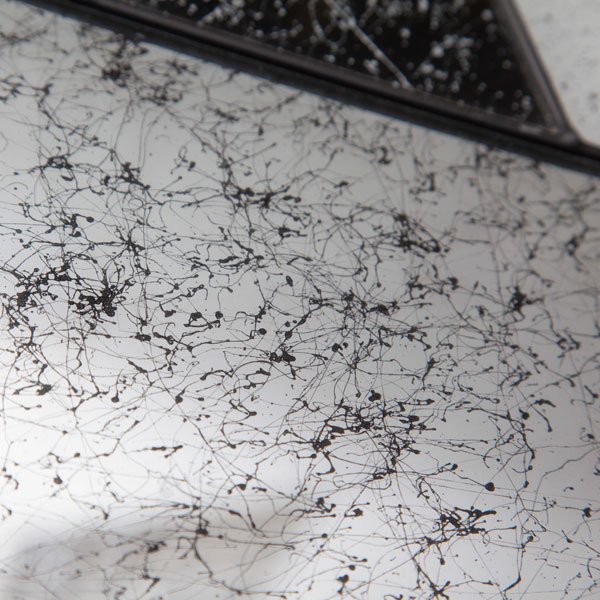
Add a little artistic twist to your glass painting endeavours with our frosted glass spray paint for unique decorative panache. Our frosted paint for glass provides you with an easy way to create an etching effect on your windows, glass door, skylights, greenhouses, shower doors or room dividers.
Buy Now
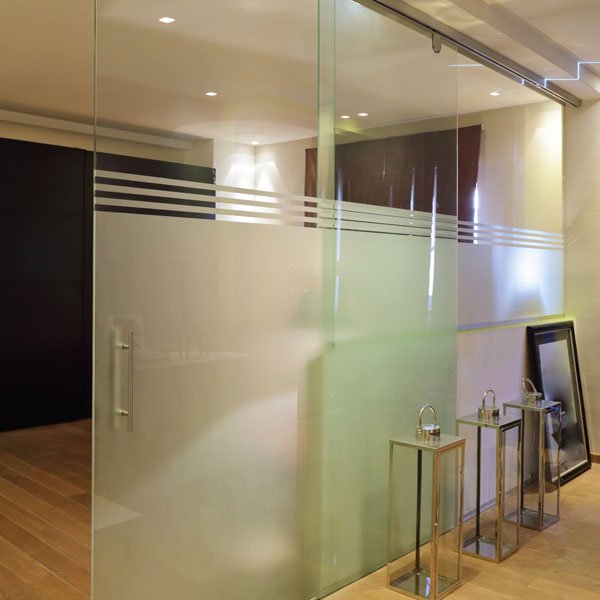
How to Remove Paint off Glass
An accidental splatter of paint can instantly ruin the look you had in mind for your glass. Even with the best preparation beforehand, I can still guarantee you every sprayer has been there.
What you really need to concern yourself with however, is how you are going to get the paint off the glass when you’re beyond the point of covering up the splatter. Glass paint removal is much easier than you might initially anticipate and there is a method available to ensure that stubborn paint comes off to give you a revived piece of glass, but be aware this is a messy process.
So, without much further ado, let’s get started!
You will require
- tissue paper
- blades
- trigger spray bottle
- gun cleaner
- glass cleaner
Firstly, pour your gun cleaner into the trigger spray bottle and start to apply heavily to small sections of the glass. Once you have done this, leave the solution for 20-30 seconds to antagonize the paint.
Now here is the step where you must be extra careful. You can use a single razor blade and position it at approximately 45 degrees from the glass panel. Any mishap with the angle and you are likely to scratch your glass so make sure the paint has softened before proceeding. Do not be overly aggressive, take your time!
Push the blade slowly against the paint and peel away, one stroke after another. Keep the motion of moving the blade consistent. Make sure to keep applying the gun cleaner and even soak a cloth with your liquid mixture if you find this helps.
Once you have removed the bulk of the paint, use our glass cleaner to buff the glass. Pour the liquid heavily onto the glass and use your blue tissue roll to buffer back to its original condition. Use a clean blade for any leftover areas.
The Bottom Line
By following the above steps thoroughly, you will be able to remove any paint from your glass & also save yourself the additional cost of replacing it in the process. For top-quality products related to glass paints, you can visit the Creative Resins catalog now and choose some of the best paint for glass available on the market today at unparalleled prices.


